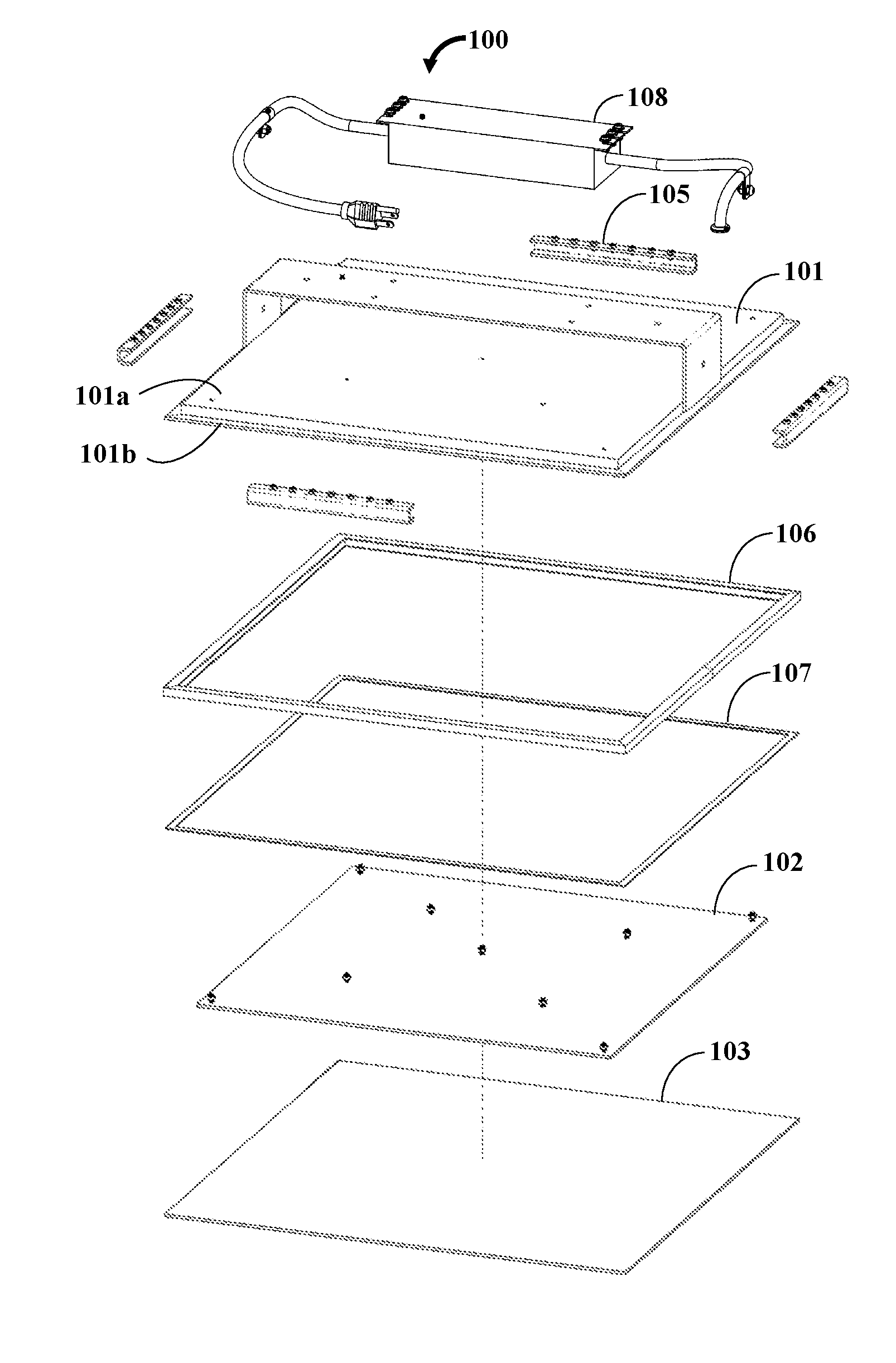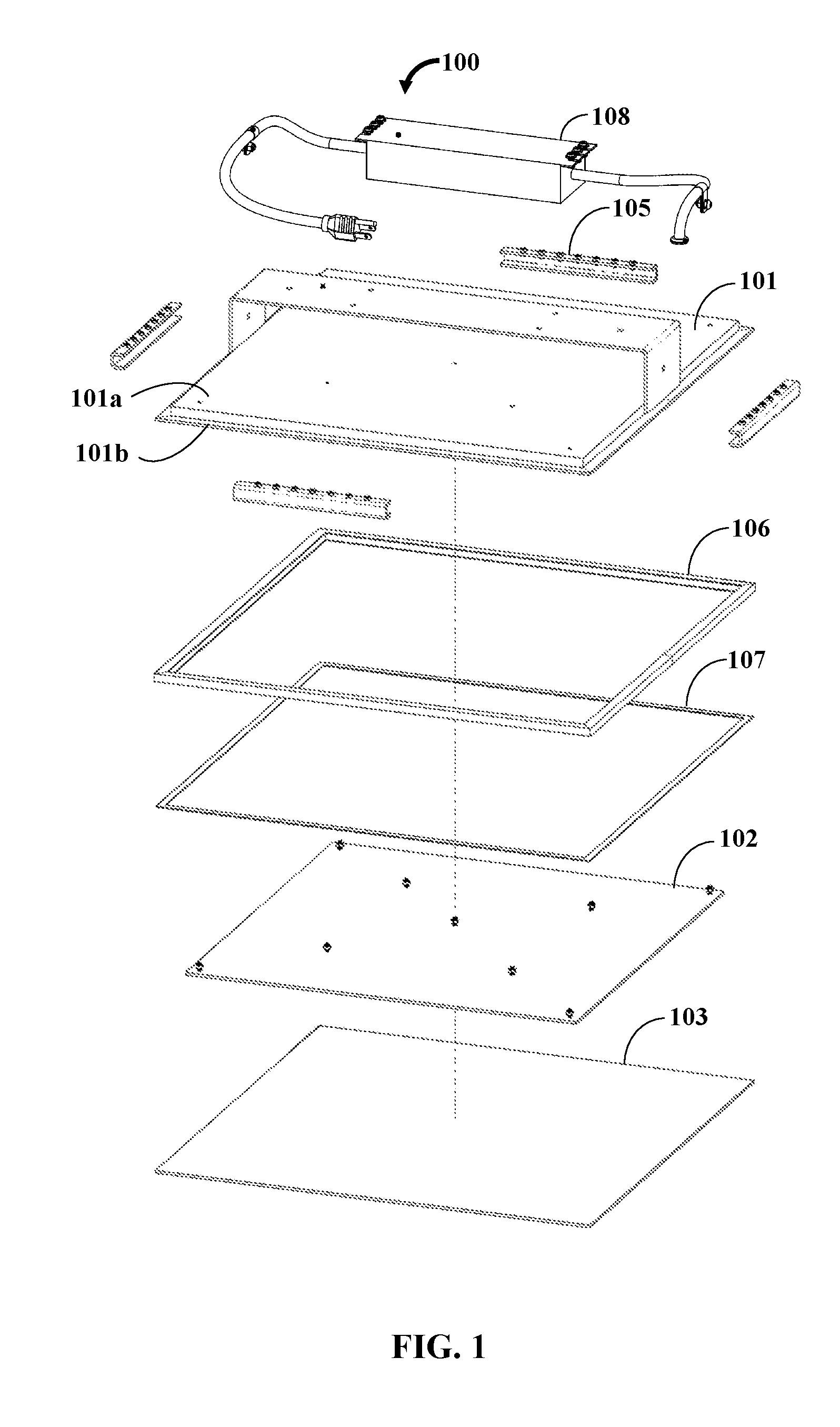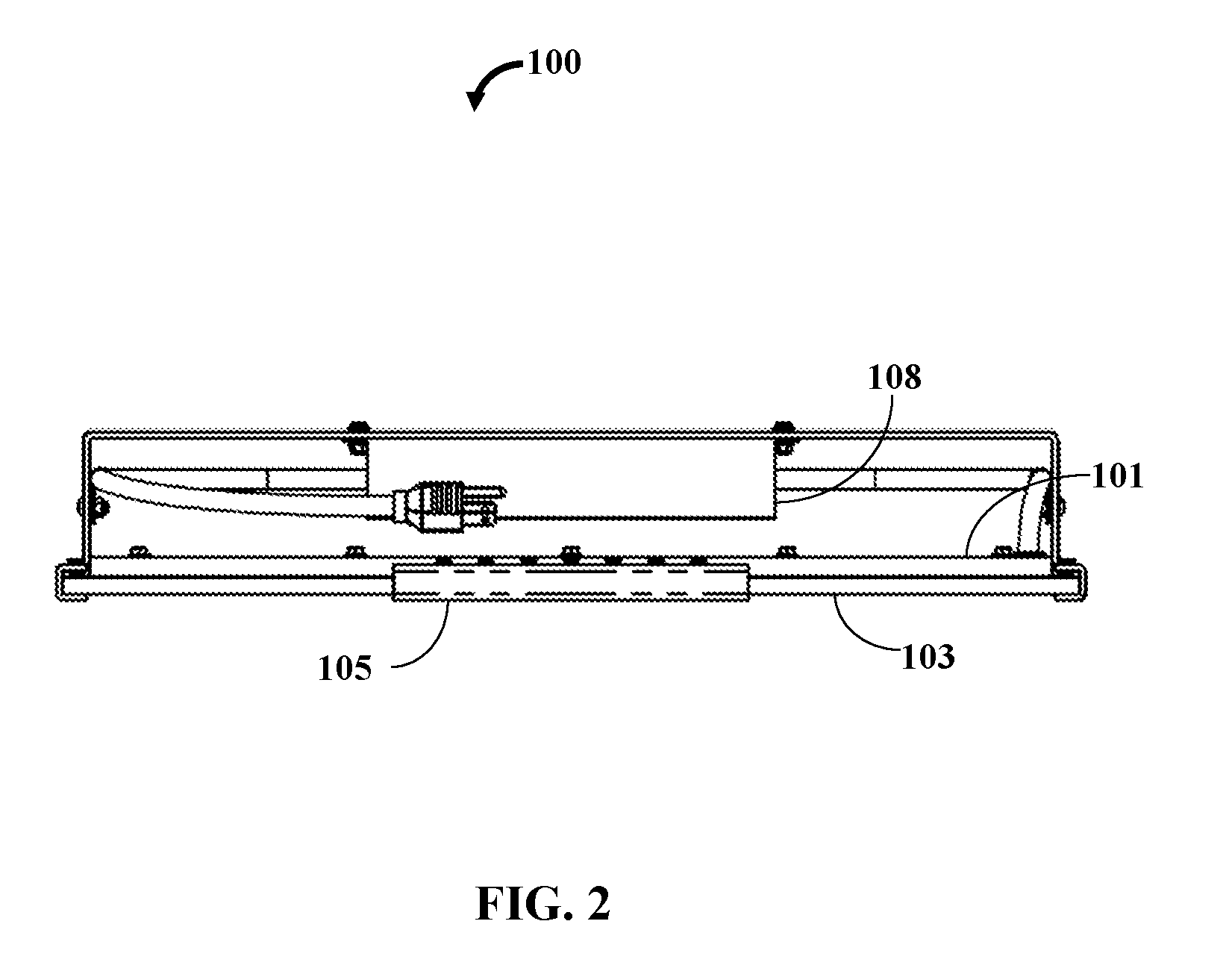Wavelength emitting electronic device
a wavelength emitting electronic and wavelength-emitting technology, applied in the field of light emitting apparatuses, can solve the problems of complex light-sensing systems, high power requirements and cost incurred by conventional light sources, and achieve the effects of enhancing growth, enhancing growth, and reducing power consumption requirements
- Summary
- Abstract
- Description
- Claims
- Application Information
AI Technical Summary
Benefits of technology
Problems solved by technology
Method used
Image
Examples
Embodiment Construction
[0017]FIG. 1 exemplarily illustrates an exploded view of a wavelength emitting electronic device 100. The wavelength emitting electronic device 100 is an optoelectronic device that creates photonic effects. As used herein, “optoelectronic devices” refer to devices or circuits that comprise both electrical and optical functions, i.e., a thin-film semiconductor device. Optoelectronic devices function as electrical-to-optical transducers or optical-to-electrical transducers. As used herein, “photonics” refers to the particle properties of light, wavelength identification, the potential of creating signal processing device technologies using photons distribution and / or manipulation, the practical application of optics and uses in the marketplace, and an analogy to electronics. The wavelength emitting electronic device 100 disclosed herein, employs both, former and the latter. Optoelectronics is based on the quantum mechanical effects of light on electronic materials, especially semicond...
PUM
 Login to View More
Login to View More Abstract
Description
Claims
Application Information
 Login to View More
Login to View More - R&D
- Intellectual Property
- Life Sciences
- Materials
- Tech Scout
- Unparalleled Data Quality
- Higher Quality Content
- 60% Fewer Hallucinations
Browse by: Latest US Patents, China's latest patents, Technical Efficacy Thesaurus, Application Domain, Technology Topic, Popular Technical Reports.
© 2025 PatSnap. All rights reserved.Legal|Privacy policy|Modern Slavery Act Transparency Statement|Sitemap|About US| Contact US: help@patsnap.com



